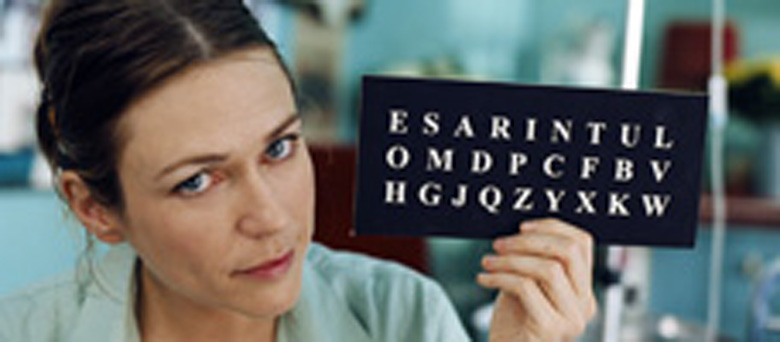Reviews
Le Scaphandre et le papillon
Julian Schnabel
USA/France, 2007
Credits
Review by Leo Goldsmith
Posted on 10 October 2007
Source Miramax 35mm Print
Categories The 45th New York Film Festival
All of Julian Schnabel’s films — with the exception of his forthcoming concert film, Lou Reed’s Berlin — are based on memoirs of dead men. His subjects’ state of being relative to life and death is not perhaps so important but for the fact that Schnabel’s primary concern in each of these films is less biographical than expressionistic: these films, it would seem, come as much (or more) from Schnabel’s hyperactive sensorium as they do from their original authors. Like the painted work for which their director initially made his name, they spill over with visual ideas, color, text, and collage that are particular to him.
It is somehow fitting, then, that Schnabel has been able to transpose his career from that of a macho, larger-than-life luminary of the New York art scene into a macho, larger-than-life auteur of the Hollywood film world. To say that he is one of the most visually experimental — or at very least, vibrant — film directors currently working in mainstream American cinema sounds a bit like a backhanded compliment. But nevertheless, his three narrative features all combine recognizable, even conventional narrative arcs (they are all portraits of artists) with a virtual phone book of international cinema’s on- and off-screen talent. Though it often smacks of Hollywood in-joking and scenesterism, Schnabel’s casting is nonetheless as witty as it is deeply connected. Why not cast Bowie as Warhol? Or Johnny Depp as a Cuban trans woman? Or Max von Sydow as Mathieu Amalric’s dad? Need a cinematographer? Then, hire Steven Spielberg’s D.P., but for God’s sake, make him add some color to his usually drained palette. But even if Schnabel’s films utilize a rolodex as burgeoning as their film’s visual inventiveness, they still do so playfully and with a sense of the fun of moviemaking that so few films of similar lineage display.
What results, then, is something like a Hollywood blockbuster version of a European art film. In biographing Jean-Michel Basquiat, Reinaldo Arenas, and now Jean-Dominique Bauby, Schnabel combines a style of excess and personal vision with excellent “name” talent and high production values. It is a strange hybrid, but an often beautiful one, with a visual sensibility that virtually bleeds off the screen, even as it sometimes occasionally seems to distract from the stories themselves. In this regard, though our perspective is precisely aligned with Jean-Do Bauby’s functioning left eye throughout the film, our point of view is still unmistakably Schnabel’s, with its flashes of color and restive hunger for light, images, text, and beautiful women. As in Orson Welles’ aborted adaptation of Heart of Darkness, in which the camera was to tell the story entirely from Marlow’s (that is, Welles’) point of view, The Diving Bell and the Butterfly aggressively conflates the camera and the audience’s vision with Bauby’s, all under the control of Schnabel’s own particular way of seeing.
But this way of seeing is quite crucial to the film itself, as it is through Bauby’s single operative eye — the fluttering butterfly of the title, as opposed to the constrictive, isolating diving bell that symbolizes his near-total paralysis — that Bauby tells his own story. Having evidently suffered a massive stroke and unable to speak or gesture in any other way, Bauby can only communicate with others through a sort of Ouija-like means devised by his hospital therapists (virtually all of whom, it seems, are highly attractive and sensual French women): the therapist reads the alphabet aloud and the patient blinks when the appropriate letter is read. Through this agonizing and initially quite dispiriting séance, Bauby is able to speak again, first to request death and then, after some consideration, to request the number of his publisher. With a way of communicating, however laborious, at his disposal, he resolves to write — that is, blink — his memoirs.
The story of Bauby’s prior life, revisited in his wheelchair-bound reverie, is a stark contrast to the more inspiring story of his life in the hospital. A rakish and charismatic writer for Elle magazine, with a busy schedule of photo shoots and womanizing to distract him from his quieter literary ambitions, Bauby is served well by Mathieu Amalric’s slightly manic physicality. Speeding along to Lourdes in a convertible for a dirty weekend with his girlfriend (with the most appropriate use of U2 in a film soundtrack that I can think of), or buddying with a real-life Lenny Kravitz (there’s that rolodex again), Bauby seems to have led a charmed, slightly dissolute life, filled with mistakes large and small, but bubbling with frivolous energy, just as Amalric does in his bulky mid-90s couture and fast sportscar. But once paralyzed, Bauby is another person entirely, and Amalric — his right eye sewn shut and his mouth ajar and drooling — is shocking when we finally see him. He seems little more than an inert mass covered in a tartan blanket, a far cry from the earlier Bauby or any of the other wild-eyed parts for which the actor is known, like Ismaël in Desplechin’s Kings and Queen. But the film’s purpose is to plumb the depths that lie inside this seemingly lifeless body, and as he has time to ruminate his lot in life, as well as the wrongs he has committed upon others, Bauby employs the only means of communicating that he has at his disposal to connect to the rest of the world.
Exploding with color and memory, and rich with sound and texture, the inner world of Jean-Do Bauby becomes, in Schnabel’s hands, as expansive and overpowering as the director’s own massive canvasses. The film toys inventively with different tricks and formats: archival footage of an iceberg fragmenting into the sea, Marlon Brando, and a lone surfer (shades of Basquiat) muddle and conspire with Bauby’s recollections of his childhood, his father, and his past relationships, as well as his nightmares of confinement and fantasies of release. It is a potent and visually seductive world, a subtle meditation on what it means to be a whole and concrete individual as Bauby struggles to reconcile his sense of self with his situation. But this constant reverie is continually interrupted by the outside world, its problems and its joys, neither of which Jean-Do is able to participate in. On the beach, with his wife and children frolicking around him, Bauby is unable to touch and laugh with them (though they ingeniously have worked out a way of playing Hangman). Over the phone, Bauby hears the distant voices of his girlfriend and his father, one too overcome with grief, the other too infirm to visit him in person. This latter scene, with Von Sydow in the role of Bauby’s beloved Papinou, is the film’s most affecting moment: the old man weeping openly at his inability to do anything for his son, while his son, in turn, is only able to blink out the words, “Don’t cry.”
It is Bauby’s relationship with his father, along with the parallel relationship that we see of Bauby and his own children, that is Bauby’s emotional imperative in writing the memoir on which the film is based. As a film about communication, about bridging a seemingly impossible divide between people, the story is nothing short of inspiring. Bauby’s affliction is the literalization of a common post-modern metaphor of our detachment from personal relations, but this story’s actuality raises the stakes on this theme of communication and its impossibility, making it a matter of life and death. It is almost as if Bauby accepts early on that his project is futile, but that he must nonetheless labor on to communicate what little he can to his children, his women, and his friends. In the hands of a more sentimental director, this could easily turn maudlin, but Schnabel emphasizes that Bauby’s achievement is one more of creation — of artistic creation — than mere human determination alone. Bauby’s memoir is a work of art as an act of survival, and one gets the sense that Schnabel would not have been interested if it had been less of the former. For the director, as in his earlier films, the important aspect of the film is that it is the work of an artist trying to save himself through art. As a physical act, Jean-Do’s work is remarkable; as an aesthetic act, it is almost god-like, like a message sent from beyond the grave.
It remains to be said, though, that as much as Schnabel has attempted to capture the writer’s process in his last two films, his depictions of the process itself have come up somewhat short. You may well be seduced by the idea of sitting at your typewriter, broccoli florets and hard-boiled eggs on hand, with a view of the Caribbean in front of you; or you may be inspired by the very feat of Bauby’s undertaking and imagine that you, too, could dash out a memoir by eyelid alone, should the need arise. But in truth, there is very little about these processes that Schnabel presents unadorned with his own florid sensibility, so that the very business of the creative work is left out. This is perhaps inevitable in films about the very interior work of writing, and as central to the story as it is in The Diving Bell and the Butterfly, the drama lies more in what he is able to communicate than the means by which he does so (at least once we’ve fully comprehended that means). Before Night Falls and The Diving Bell therefore rely heavily on voiceover narration to tell their subjects’ stories. But whereas Basquiat tells its subject’s story in a more roundabout fashion, through those who knew him, its greatest scenes are of the artist at work: Basquiat and Warhol painting together, Basquiat visiting the vast and enviable studio of Gary Oldman’s faux-Schnabel character, or Basquiat working in maple syrup on the table of a greasy-spoon diner. It is clear that Schnabel doesn’t feel — or at least cannot portray — the thrill of writing in a way that he does with painting, and I think his last two films, astonishingly beautiful as they are, suffer slightly for it. One almost wishes Schnabel could find a story about a creator (or, for once, a creatrix?) in a medium for which he has a more ardent, nuts-and-bolts passion. Cinema, perhaps: A Julian Schnabel biopic of Orson Welles seems almost hilariously appropriate. But then again, Welles never liked to film in color.
More The 45th New York Film Festival
-

The Darjeeling Limited
2007 -

Hamlet
1921 -

The Romance of Astrea and Celadon
2007 -

Secret Sunshine
2007 -
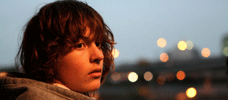
Paranoid Park
2007 -
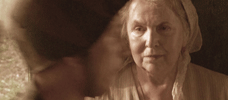
Alexandra
2007 -
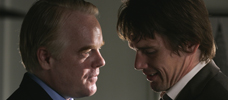
Before the Devil Knows You’re Dead
2007 -

The Diving Bell and the Butterfly
2007 -
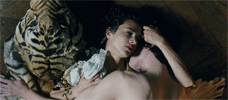
The Last Mistress
2007 -
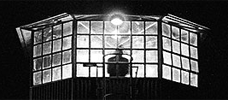
The Man from London
2007 -
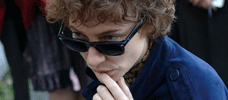
I’m Not There
2007
We don’t do comments anymore, but you may contact us here or find us on Twitter or Facebook.



